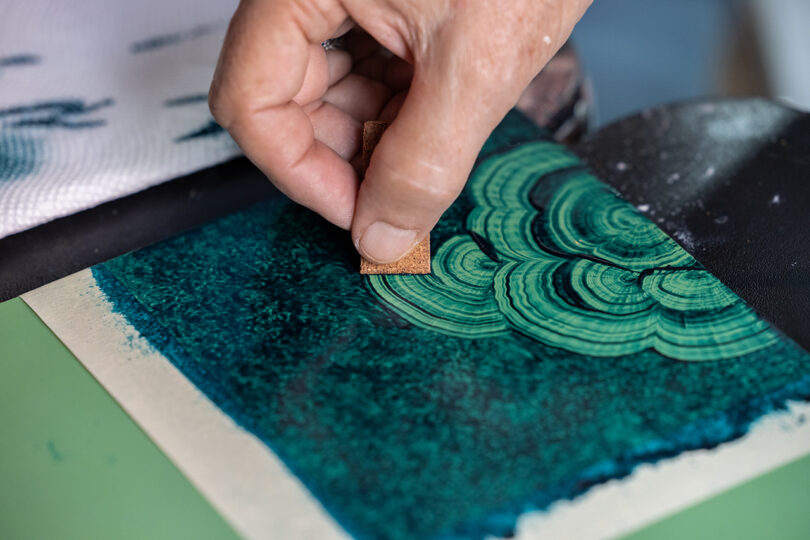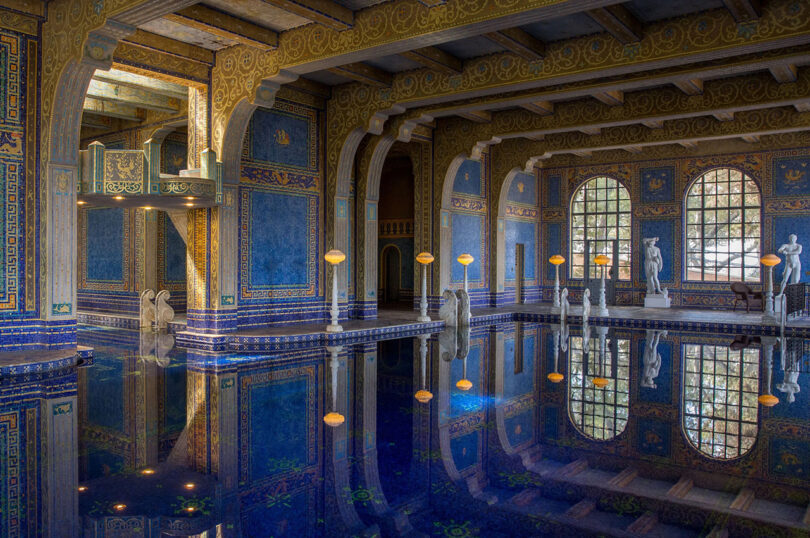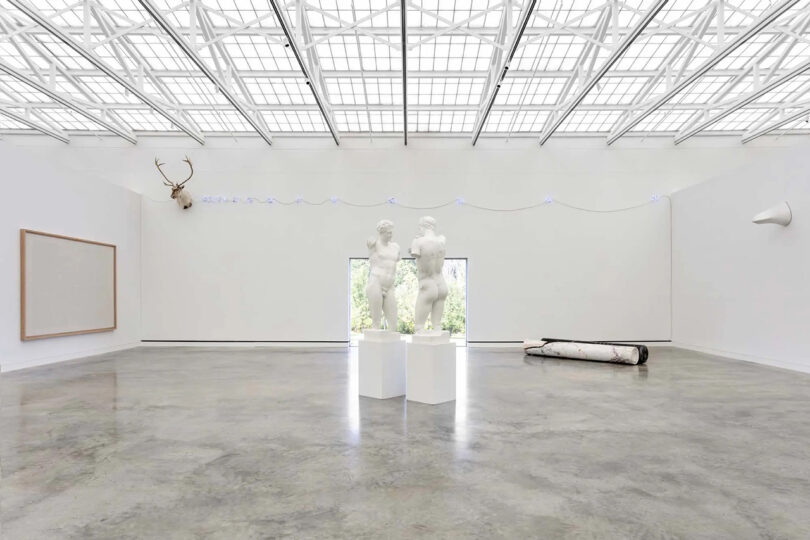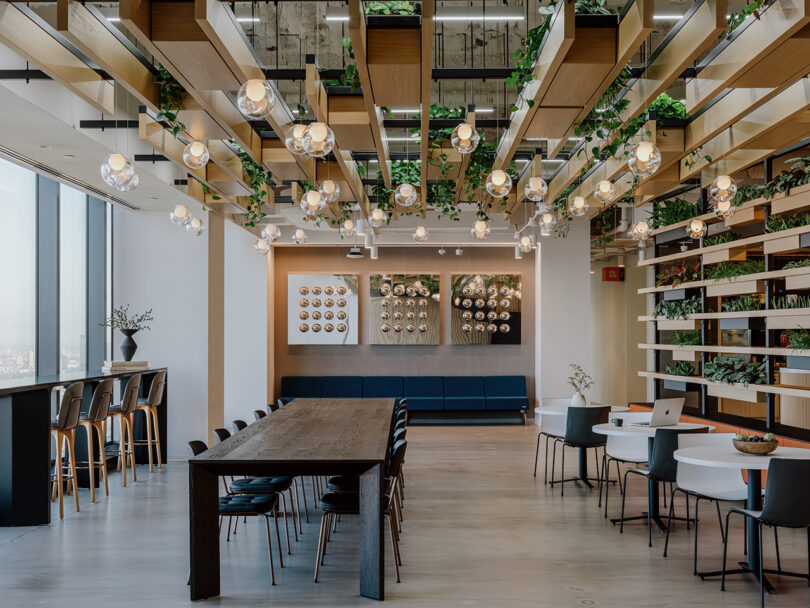Born into a balance of beauty and function, Chinese-American artist Tina Scepanovic grew up surrounded by apple orchards and the spirit of innovation in Silicon Valley. With a mom who was a florist and a dad who was an industrial designer turned mechanical engineer, it was natural. Scepanovic kept busy, concocting hair dye out of pebbles in the backyard or fashioning high heels from cork board and recycled polyester, entertaining herself with whatever was within reach.
It would be some time before she pursued art wholeheartedly, first exploring other paths in the biotech and pharmaceutical industries, then directing an early music community choir. A few years ago, Scepanovic enrolled in a traditional furniture painting and restoration course at the Isabel O’Neil Studio and was introduced to historical decorative finishes, such as gilding, lacquer, faux bois, and marble. “After my first class, I was hooked,” she shares. “I saw the immediate power in the ability to render any surface in virtually any material using paint.” Since 2020, Scepanovic has been incorporating this age-old and often overlooked art form into sculptures and installations that blend old and new.

Tina Scepanovic \\\ Photo: Maria Baranova
“My ideas are strewn across the physical and digital worlds, nestled in three half-used sketchbooks, countless pages in Notes, and bad photos on my iPhone that I’ve hearted as “Favorites,” Scepanovic admits. “Ideas are great, but they are a dime a dozen. It all comes down to execution, so when I come across one where I feel compelled to drop whatever I’m doing to tinker, I follow that instinct. Those are the ideas that actually stick and make an impression.”
The artist doesn’t limit her work to a single medium or material but almost always finds a way to incorporate a historical decorative finish, some that date as far back as the Renaissance. It makes sense then that Scepanovic has restoration and refinishing in her wheelhouse and loves working with second-hand materials across design eras. “I find myself pushing forward in time and simultaneously pushing back, pairing ancient craft with contemporary forms. The result, I hope, is work that can’t really be placed in time,” she says.
When not creating art, Scepanovic can be found reverse engineering flavors and transforming leftovers in the kitchen. The latter is a personal superpower that was born from being a busy working mom who prefers to avoid the grocery store. She adds, “Whenever my family declares there’s nothing in the fridge, I accept it as a challenge to prove them wrong.”
Today, Tina Scepanovic is joining us for Friday Five!

Photo: Walter Wlodarczyk
Founded in 1955, this is the legendary school where I was introduced to and trained in historical painted finishes. Isabel (1908-1981) was a conservator who studied the historic origins of the art form at Yale and traveled across Europe to observe the methods of skilled craftspeople. Upon her return to New York, she developed new methods of achieving faux finishes to simulate precious materials like tortoise shell, ivory, and shagreen. Works from the studio have been exhibited at The Museum of the City of New York, Tiffany & Co., and Sotheby’s. Almost 70 years later, the studio remains dedicated to maintaining the highest standards and traditional methods of the Art of the Painted Finish.

Photo: George Rose for Getty Images via Architectural Digest
My first memory of art was the Roman Pool at Hearst Castle, which left an indelible impression on me as an eight year old. Styled after the Baths of Caracalla in Rome c. 211-17 CE., the indoor structure is covered floor to ceiling in tiny 1-inch mosaic tiles. British muralist Camille Solon developed the designs after traditional marine monster themes found in ancient Roman baths. The tiles, called “smalti,” are made of glass in warm ochres, vibrant lapis lazulis, and fused gold. To this day, no matter how lost I get in my thoughts, I somehow always end up appearing as a mermaid in my imagination.

Photo: Carol M. Highsmith via the Library of Congress
3. Jellyfish Therapy
Watching these creatures swim all day is a form of serious therapy. While brainless, jellies possess undeniable wisdom and grace. As a species that predates dinosaurs by hundreds of millions of years, we might have a thing or two to learn from them. Jellyfish are the ocean’s most efficient swimmers, not because they rely on muscle but because they go with the flow. Their elasticity recaptures energy as they move, so they actually use less of it to travel a greater distance.

Photo: Marco Anelli/Tommaso Sacconi via Magazzino Art
4. Arte Povera
Everyone has an art movement that matches their personality, and mine is definitely Arte Povera. Active from the late 1960s to the 1970s in Italy, the movement explored a range of unconventional processes and “everyday” materials to challenge the values of the commercialized art world. While the term literally means “poor art,” the movement wasn’t referring to a lack of money as much as making art without the restraints of traditional practices and materials. My work in vintage glass especially embraces these philosophies of the Arte Poverists.

Photo: Michael Yamashita for National Geographic
5. Nine Villages Valley
This is one of nature’s masterpieces in Sichuan Province that I have yet to visit. My parents brought back photos from their recent trip, and I was shocked that no filters had been used to capture the striking colors. The waters are crystal clear, given the deposits of calcium carbonate (chalk) at the bottom. Due to the contrast between the sediment at the bottom of the pool and colors of the surrounding plants, the water takes on hues of dark blue, turquoise, red, yellow, and pink. During winter, the water doesn’t freeze because the source is underground and maintained naturally at room temperature all year.
Works by Tina Scepanovic:

Flora \ Scepanovic’s limited edition bronze works are based on the principles of Chinese brushstroke. The art objects prioritize capturing “qi,” or vital life, through the command of material. as well as improvisation and spontaneity. \\\ Photo: Ian Baker

Gobstoppers No. 35 \ Featuring a sleek lacquer finish using Farrow and Ball Dead Salmon. \\\ Photo: Black & Steil

Mirrored Gobstoppers \ Scepanovic was commissioned to create a series of Gobstoppers for Hudson River Trading’s new cafe on the 74th floor at 3 World Trade Center. In the space designed by Gensler, a funhouse mirror finish was selected to reflect the vibrant and fun-loving culture of the company. \\\ Photo: Max Burkhalter

Sprezzatura \ Sprezzatura and the Curse of Competence are a pair of lamps created as a part of “You Always, You Never,” a body of work exploring domestic relationships through vintage glass. Since 2022, Scepanovic has demonstrated a commitment to the material. She approaches her work with vintage glass like a puzzle, reimagining its potential while minimizing additional energy or resource consumption. \\\ Photo: Maria Baranova

Resilience \ Scepanovic’s newest vintage glass installation features over seventy 1970s smoked glass panels, selectively gilded using traditional verre églomisé with 21 karat moon gold to create a geometric ombre effect. \\\ Photo: Black & Steil

